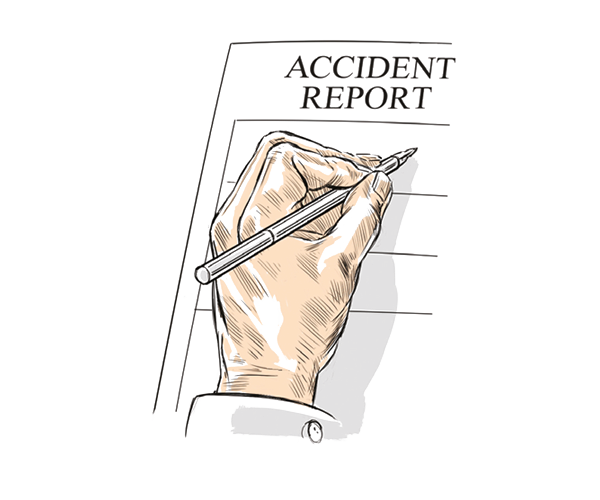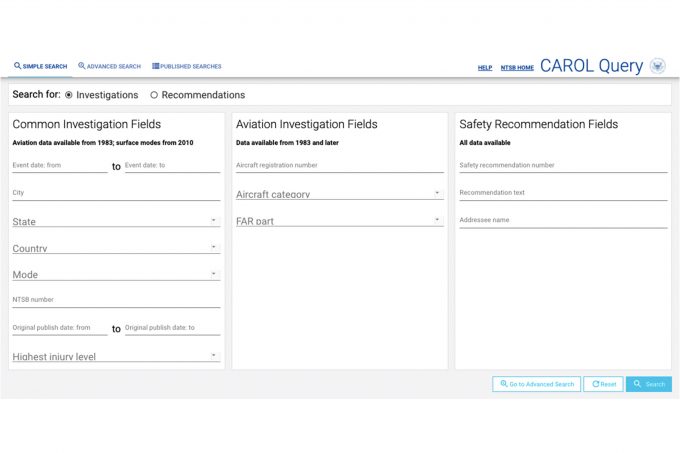Don’t assume…
Cessna 172
N92036
Colchester, Illinois
Injuries: One serious
The private pilot reported that he checked the fuel tanks prior to take-off.
It was dark in the hangar when he used a wire to check the fuel level in the tanks. He was not wearing his glasses and he thought he had ‘an inch or so’ of fuel, which he thought was enough, and departed on a cross-country flight.
During the flight, the engine ‘sputtered’ and lost power. The pilot turned the aeroplane towards the destination airport but lost airspeed, so he lowered the nose and conducted a forced landing into the trees. The fuel tanks were empty and there was no fuel odour anywhere at the accident scene.
Comment While the old wartime adage ‘don’t assume, CHECK’ couldn’t be more appropriate than in this accident, sometimes it helps to think ‘what would happen if I assumed incorrectly…?’. Not quite so catchy, I agree, but the consequences of ‘assuming incorrectly’ are often too great to be ignored!
Short circuit
Beech B200
G-YVIP
Bournemouth Airport, Dorset
Injuries: None
The aircraft was on final approach to Bournemouth Airport in clear weather, at a height of about 1,200ft. Very shortly after selecting approach flap, the crew noticed a yellow glow and smoke coming from behind the commander’s circuit breaker (CB) panel. They attempted to isolate the problem by operating the master switch gang bar, which switches off the battery and electrical generators, but this had no effect, so they declared a Mayday.
“The crew noticed a yellow glow and smoke coming from behind the panel”
The first officer tried to reach the fire extinguisher under his seat but found this to be difficult because of his shoulder straps.
After landing, the crew evacuated the aircraft on the runway and the airport fire service attended, but the smoke stopped without intervention when the aircraft was shut down. The investigation concluded that the most likely scenario is that rainwater entered the cockpit through the storm window, which is above the CB panel.
Comment This is a stark reminder that water can cause fires, as well as put them out – where electrics are concerned! Reflecting on how to isolate those electrical circuits is important too but as in this case your fire extinguisher may end up as your last line of defence – if you can get to it!
Stuck drain
Piper PA-28
G-BZDA
White Waltham, Berkshire
Injuries: None
The accident flight was the fourth instructional flight of the day in G-BZDA for the instructor who was also the PIC. While his student undertook cockpit preparation, the instructor carried out a transit check in accordance with the PA-28 checklist.
In addition to the transit check, he sampled fuel from both wing tank fuel drains and from the gascolator. During the after-start checks it was noted that fuel pressure dropped when the fuel pump was turned off but stayed within the green range on the gauge, indicating to the instructor that the system was functioning satisfactorily.
The engine parameters were in the normal range during the ‘before take-off’ power check. On the take-off roll the aircraft accelerated as expected but as G-BZDA climbed through 100ft its engine abruptly ran down. The instructor took control, lowered the nose and looked for a suitable landing area, while simultaneously transmitting a brief Mayday call. The engine then recovered to full power, so the instructor gently raised the nose to climb away. He had just started cancelling the Mayday when the engine ran down for a second time and stopped.
With a railway line ahead, the instructor turned the aircraft hard left towards open ground and executed a forced landing. Although the nosewheel collapsed during the landing, the student and instructor were unhurt and able to vacate the aircraft without assistance.
This accident resulted from the aircraft’s gascolator drain valve being inadvertently locked open after a fuel sample had been taken, causing partial fuel starvation and a loss of power when the aircraft was climbing shortly after take-off. The investigation found evidence dating back to 1975 that lockable gascolator drains were an identified hazard. Following this accident the CAA released a safety notice reminding owners and operators of this potential hazard for any aircraft fitted with lockable gascolator drains and recommending replacement with ‘suitable, non-locking alternatives.’
Comment I must confess to not having thought through the significance of a fuel drain sticking open downstream of the fuel selector valve.
During a pre-flight inspection and with the fuel selected ‘off’ the gascolator will stop discharging fuel when emptied, only to start again when the fuel is selected back to ‘on’ during start. Now that’s a real ‘Murphy’!
Spoil heap
Piper PA-28-161 Warrior II
G-BTRY
Enstone Airfield, Oxfordshire
Injuries: None
The pilot was returning to Enstone Airfield and, as the wind was light, he positioned the aircraft on a long final for Runway 08 to avoid landing into the setting sun. However, on hearing over the radio that Runway 26 was in use he repositioned for a landing in that direction.
“The left main landing gear struck the top of a 3.5 metre tall pile of gravel”
He found the glare of the setting sun distracting as he approached the runway, but he stated that he could see the airfield’s white brittle boundary fence and runway markings clearly enough to continue the approach. An instructor in an aircraft that was waiting to depart at the Runway 26 holding point stated that G-BTRY was very low on the final approach.
The aircraft’s left main landing gear tyre struck the top of a 3.5 metre-tall light-coloured pile of gravel that was being stored on a disused section of the airfield, which was outside the airfield boundary fence.
The gravel pile was on the runway extended centreline, about 120 metres from the runway threshold and formed an angle of 1.7° to the Runway 26 threshold, well below a normal approach path angle of 3°.
The impact caused the left landing gear leg to detach from the aircraft. The instructor made a radio call to the pilot, informing him that he had lost his left landing gear leg and that he should go-around. The pilot diverted to Oxford Airport as it had better rescue and fire fighting equipment than Enstone. Shortly after touchdown at Oxford the aircraft left the runway’s paved surface to the left, coming to rest on the grass.
Comment There is much to take away from this accident with something in it for all of us. Should the pilot have been more insistent about landing down sun? How close to obstacles do we really get on the approach? Not a problem with unobstructed approaches to licensed airfields, but when there’s hedges / fences… gravel heaps? If we even notice them are we actually confident about avoiding them?
My schoolboy maths puts the clearance over the gravel heap as 2.6 metre on a ‘standard’ three degree glide slope. We can argue about eye-lines and aiming points etc, but that’s close in my book! Especially when your focus is on the touchdown point.
Fatal omission
Lockwood Aircam
N123GN
Hemet, California
Injuries: One fatal
The pilot, who was also the owner / builder of the experimental amateur-built kit aeroplane, was conducting his first test flight in the aeroplane.
On the morning of the accident, several of the pilot’s friends and acquaintances gathered to watch his first flight. A video showed that during take-off, as the aeroplane reached about 20ft agl, the left wing folded upward.
The aeroplane immediately rolled left and impacted the ground. Examination of the aeroplane revealed that the forward and rear left-wing lift struts remained connected to the wing. At the bottom ends, however, the bolts were present and secured to the lift struts with washers and nuts, but had not been connected to the fuselage through the attachment fittings.
One of two friends who assisted with the build was an aircraft mechanic, and he reported that the left wing had been removed and reinstalled several times during the build process due to ‘build errors’. Each installation required the attachment hardware to be removed and reinstalled, which the pilot performed each time on his own.
The mechanic reported that he periodically reminded the pilot to verify that the attachment hardware had been installed correctly, but he continued to find loose screws and nuts throughout the build process. The pilot likely attempted to install the lift struts on the fuselage after the wing’s last re-installation, but failed to ensure that the left-wing lift strut bolts passed through the fuselage attachment points at the attachment fittings.
Comment Reducing the likelihood of this kind of accident is almost impossible where there is no final, independent check of critical items and, as a result, a fatal omission was carried airborne.
The builder’s colleagues appeared to do their best to enshrine safe practices during the build process, apparently without success. And I suspect there was several occasions when the builder could have ‘taken a hint’ that he was not well-suited to his project but, in disregarding them, he ended up paying the ultimate price.






